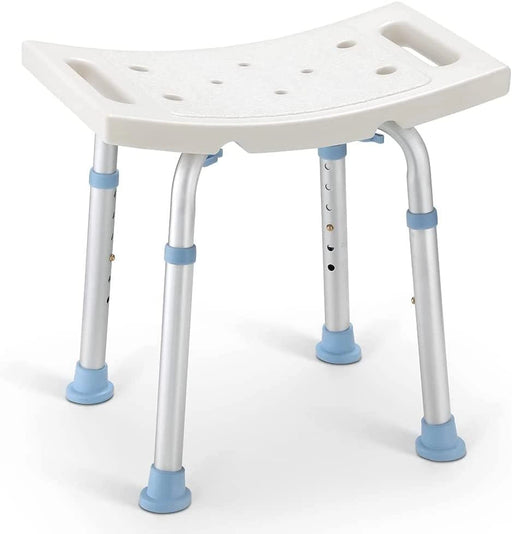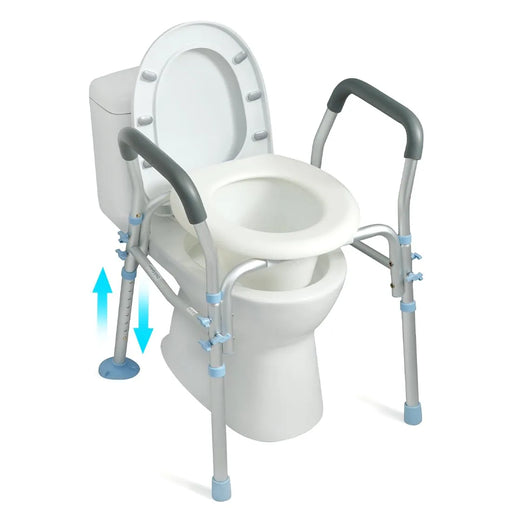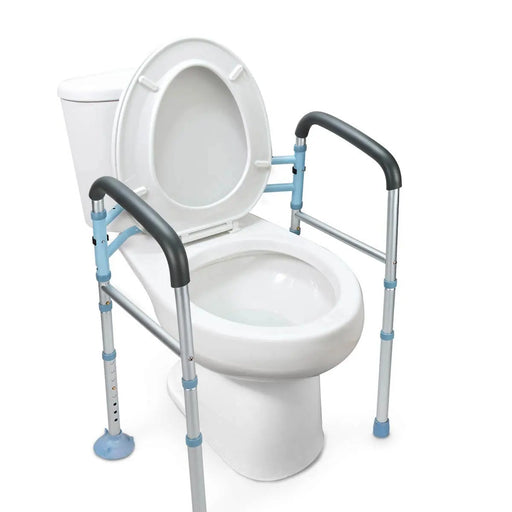Managing Arthritis in the Elderly - Coping with Pain and Discomfort
As we get older, a whole host of senior health issues tend to crop up - and for many older folks, arthritis is one of the most prevalent and debilitating.
Arthritis, which refers to inflammation of the joints, can cause pain, stiffness, discomfort, and reduced mobility, impacting seniors' quality of life and making it challenging for older adults to carry out daily activities.
In this article, we will explore the symptoms, causes, treatment options, and ways to alleviate pain and discomfort associated with arthritis as a senior.
Symptoms of Arthritis in the Elderly
Arthritis can happen in different ways, and the symptoms may vary depending on the type of arthritis. However, Some common signs and symptoms of arthritis in seniors include:
1.Joint pain
Seniors with arthritis may experience pain in their joints, which can be constant or intermittent. Arthritis can affect various joints in the body, including the hands, knees, hips, spine, and shoulders. The pain may worsen with movement or after prolonged periods of inactivity.
2.Stiffnessan
Arthritis can cause stiffness in the affected joints, making it difficult for seniors to move or perform simple tasks, such as getting up from a chair or gripping objects. For example, if you have affected hands, it might be difficult and ached for you to fully bend your fingers or form a fist. Stiffness is often found worse in the morning or other periods of long-time inactivity.
3.Swelling
Inflammation of the joints can result in swelling, tenderness, and redness around the affected area. You might even find it hot and tender to touch these areas.
4. Reduced range of motion
Arthritis can limit the range of motion in the affected joints, making it challenging for seniors to perform activities that require joint movement, such as bending, reaching, or walking.
5.Fatigue
Fatigue can likely be viewed as the worst symptom of the disease because it easily and constantly affect the overall quality of life for seniors. Symptoms like general physical weakness, drowsiness and exhaustion are most seen when you are suffering from fatigue.
Causes of Arthritis in the Elderly
There are several possible factors that can contribute to the development of arthritis in older adults. Some common causes include:
Wear and tear
Osteoarthritis, which is the most common type of arthritis in seniors, is often caused by wear and tear of the joints over time. It develops when the bone and protective cartilage in a joint gradually deteriorate, failing to cushioning our joints and eventually leading to pain and stiffness.
Inflammation
Rheumatoid arthritis, an autoimmune disease that affects the joints, occurs when the immune system mistakenly attacks the lining of the joints, causing inflammation and damage.
Genetics
Family history can also play a role in the development of arthritis. If a senior has a family history of arthritis, they may be at a higher risk of developing the condition. Some people are born with genes that cause cartilage to degrade over time, causing their immune system to attack joints, or prevent the body from flushing out excess uric acid. There are various genetic causes that can lead to different types of arthritis.
Previous injuries
Sometimes, an injury is severe enough to lead to the development of osteoarthritis. In older adults, this type of arthritis usually appears after a fall that results in a sudden bump to the knee, hip, shoulder, or ankle. Injury-related arthritis is particularly prone to joint instability or deformity, making daily activities difficult to manage.
Besides, older adults who have had previous joint injuries, such as fractures or dislocations, may be more susceptible to developing arthritis in those affected joints.
Treatment Options for Arthritis in the Elderly
Although there is no cure for arthritis, there are various treatment options available that can help manage the symptoms and improve the quality of life for seniors. Treatment plans are often tailored accordingly to the severity of arthritis and the individual's overall health. Some common treatment options for arthritis in the elderly include:
1. Medications
Nonsteroidal anti-inflammatory drugs (NSAIDs), acetaminophen, and corticosteroids are commonly prescribed to relieve pain and reduce inflammation associated with arthritis. However, it's important for elderly individuals to work closely with their healthcare provider to manage medications and monitor for potential side effects.
2. Physical Therapy
Physical therapy can be effective in improving joint mobility, strength, and flexibility. A physical therapist can create a customized exercise program to suit the needs and abilities of the elderly individual, and also provide guidance on proper body mechanics and joint protection techniques.
3. Assistive Devices
Assistive Devices: Assistive devices such as knee scooter, canes, walkers, and braces can help reduce pressure on the joints and provide support for mobility. These devices can be especially helpful for elderly individuals with arthritis in weight-bearing joints like the knees and hips.
4. Lifestyle Modifications
Simple lifestyle modifications can also help manage arthritis symptoms. Making certain lifestyle changes, such as maintaining a healthy weight, engaging in regular physical activity, and avoiding activities that worsen the symptoms, can help seniors manage their arthritis and reduce pain.
5. Alternative Therapies
Some seniors may find relief from arthritis symptoms through alternative therapies, such as acupuncture, massage, or herbal supplements. However, it's important to consult with a healthcare provider before trying any alternative therapies to ensure their safety and effectiveness.
In addition to the above treatment options, there are some strategies that elderly individuals can incorporate into their daily routine to alleviate pain and discomfort caused by arthritis:
6. Rest and Relaxation
Taking regular breaks and getting enough rest can help reduce joint strain and minimize pain. Adequate sleep is also important for overall health and well-being.
7. Balanced Diet
Eating a balanced diet that is rich in anti-inflammatory foods, such as fruits, vegetables, whole grains, and healthy fats, can help reduce inflammation in the body and promote joint health.
8. Joint Protection
Practicing joint protection techniques, such as avoiding repetitive motions, using proper body mechanics, and using assistive devices when needed, can help prevent further damage to the joints and alleviate pain
It's never easy to cope with physical pain and discomfort while aging, but we need to know that everyone has the right to live happily regardless of age and health condition. Reach out to any possible help that suits your situation.
Recommend Products
-
 Sale
Sale
Standard - 300LBS Capacity Shower Stool
Original price $51.99From Original price $28.99Original price $51.99Current price $28.99From $28.99Current price $28.99OasisSpace Medical Square Shower Stool for Bathtub OasisSpace Square Shower Stool for Bathtub is approved as the highest standard(FDA) for medical...
View full detailsSaleOriginal price $51.99From Original price $28.99Original price $51.99Current price $28.99From $28.99Current price $28.99 -
 Sale
Sale
300LBS Capacity Raised Toilet Seat with Arms
Original price $120.99From Original price $69.99Original price $120.99Current price $69.99From $69.99Current price $69.99OasisSpace Raised Toilet Seat with Arms - Safe and Convenient OasisSpace Raised Toilet Seat with Arms provides stable support for users to sit dow...
View full detailsSaleOriginal price $120.99From Original price $69.99Original price $120.99Current price $69.99From $69.99Current price $69.99 -
 Sale
Sale
300LBS Capacity Stand Alone Toilet Safety Rail
Original price $69.99From Original price $44.99Original price $69.99Current price $44.99From $44.99Current price $44.99OasisSpace Toilet Safety Rails - Fit Any Toilet OaisSpace stand-alone toilet safety rails provide sturdy support for the elderly and people with ...
View full detailsSaleOriginal price $69.99From Original price $44.99Original price $69.99Current price $44.99From $44.99Current price $44.99




